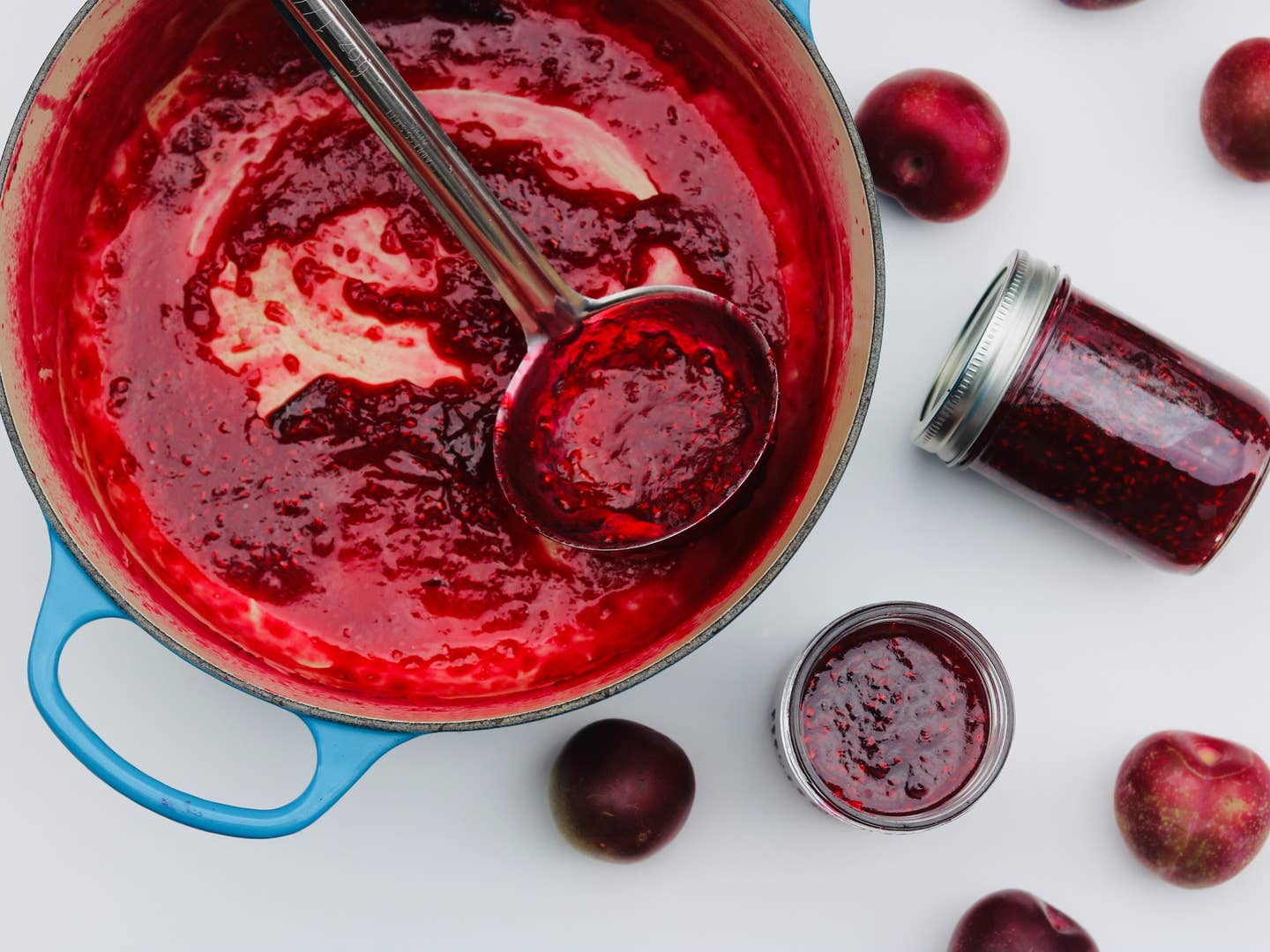Plum and Raspberry Jam
Forget the store-bought stuff. DIY preserves are the sweetest way to extend your summer.
- Serves
makes Three 8-oz. jars
- Cook
1 day

Pectin—a naturally occurring polysaccharide in fruit—is what makes jam gel. Different fruits naturally contain more or less pectin, so, while you never need to worry about a Seville orange marmalade or quince jelly getting a proper set (unless you undercook or overcook them), some low-pectin fruits, like cherries and pears, don’t gel so easily.
High-pectin fruits include apples, citrus, currants, cranberries, gooseberries, plums, and quince. On the lower end of the pectin spectrum are blueberries, cherries, peaches, pears, and strawberries. You must also take the fruit’s degree of ripeness into account, however. The riper the fruit, the less natural pectin it contains. For the best jams and jellies, aim for a mixture of 75% perfectly ripe fruit and 25% slightly underripe fruit.
This recipe, which can be adjusted to feature a variety of different fruits, is adapted from the basic jam recipe in Camilla Wynne’s book Jam Bake: Inspired Recipes for Creating and Baking with Preserves.
Featured in: "How to Quickly and Safely Can Jams and Jellies."
Ingredients
- 1 lb. 1½ oz. raspberries (3¾ cups)
- 1 lb. 1½ oz. pitted plums, finely chopped (3 cups)
- 1 lb. 3 oz. sugar (2½ cups)
- 3 tbsp. fresh lemon juice
- 2 small cinnamon sticks
- 3 star anise pods
Instructions
Step 1
Step 2
Step 3
Step 4
Keep Reading
Continue to Next Story










